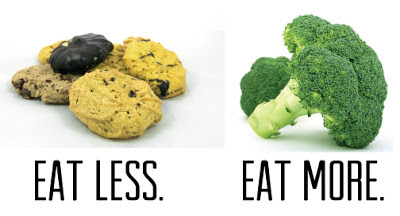above image: Portion Size Plate via (webmd.com)
Over the years portion sizes have gotten larger and larger, and this makes It's hard to control how much you should eat when you have so much food in front of you.
Make sure you portion your plate right. When you are loading up your plate you should be aware that at least half of your plate should be filed with veggies, the more color the better. The other half of your plate should be half low-fat protein that has been baked, broiled or grilled, not fried. The other half of the half plate should be whole-grain starches, which are good for your heart and will keep you feeling full for longer. Vegetables like corn, potatoes, and yams are high in starch and should be kept on the 1/4 part of the plate instead of the vegetables side of the plate.
Basic guidelines for estimating portions are:
- Baseball = 1 cup. Serving size for yogurt, 1 fruit, salad greens, or cooked veggies
- Lightbulb = 1/2 cup. Serving size for ice cream, frozen yogurt, rice, or pasta,
- Golf ball = 1 oz or 2 teaspoons. Serving size for peanut butter or hummus
- Poker chip = 1 teaspoon. Serving size for fats or oils like butter, salad dressing, or mayo, and oil
- Cassette tape = 1 slice of bread
- Deck of cards = 3 oz of meat (chicken). Serving size for a slice of cake, tofu, lean meat or poultry,
- Checkbook = 3 oz of fish
- CD = 1 oz lunch meat
- Hockey puck = 3 oz muffin or biscuit
- 3 dice = 1 1/2 oz cheese
- Computer mouse = baked potato
- Dental floss container = brownie or piece of chocolate



